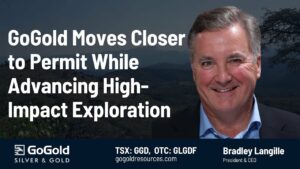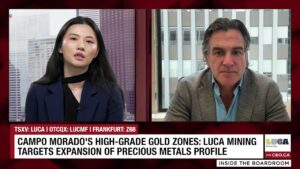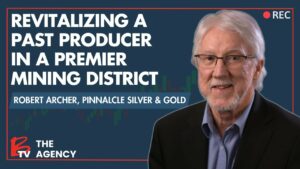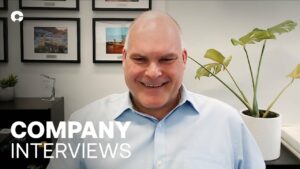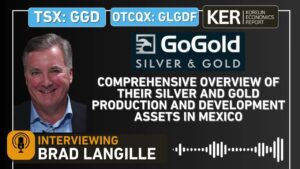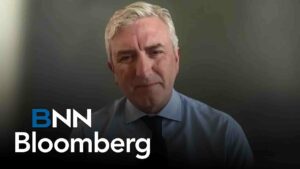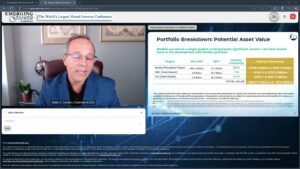Newly listed First Mining Finance (TSXV: FF; OTCQB: FFMGF) is on a mission to secure quality assets at cheap prices.
Like the private equity and royalty and streaming companies that have been wheeling and dealing over the past few years of the ongoing bear market in commodities, the company is looking to take advantage of low valuations and rock-bottom interest in the mining sector.
Founded by Keith Neumeyer of First Majestic Silver (TSX: FR; NYSE: AG) and First Quantum Minerals (TSX: FM; LSE: FQM), the company listed on the TSX Venture exchange in April through a reverse takeover. Before it went public, the company started out as a combination of private explorer Sundance Minerals and one of Neumeyer’s private companies, plus a couple of First Majestic Silver properties. But soon after it listed, First Mining went after its first acquisition, beating rival bidder Sulliden Mining (TSX: SMC) with an $11-million, all-stock offer for Coastal Gold and its Hope Brook gold project in Newfoundland in July.
With First Quantum in Zambia in the 1990s and First Majestic Silver in Mexico in the early 2000s, Neumeyer has a history as a first mover who isn’t afraid to act in a depressed market.
To find out how First Mining plans to do the same, The Northern Miner spoke to First Mining Finance President Patrick Donnelly in early August. Donnelly discussed the "mineral bank" concept behind the company, the level of competition for assets in the current market, and where we are in the current “unprecedented” bear market in commodities.
The Northern Miner: First Mining Finance was only listed on the Venture board in April. Tell me about the concept behind the company and its origins.
Patrick Donnelly: Keith Neumeyer has been working on this venture for the past two years. He thought we were at or getting near to the bottom of this awful bear market and decided to put this co. together.
Our CEO, Chris Osterman, was running Sundance Minerals, a private exploration company that had tried to do IPO two years ago, but they just couldn’t get enough interest.
Keith, who runs First Majestic Silver, was looking to option one of Chris’ properties. In the end that didn’t work out, but Keith liked what he saw with Chris so they started having discussions about taking Chris’ company public and creating this mineral bank. So last summer, exactly a year ago, they did a seed financing into Sundance at 25¢, and raised $2.7 million which was put into escrow until the company went public.
I joined the company in January and started working on a financing for $5 million at 40¢ and the reverse takeover with shell company Albion Petroleum, which were both completed in April.
TNM: You’re a very new company in a terrible market: How has the market reception been?
PD: It’s been phenomenal – it’s amazing, the interesting thing that people keep saying to me is ‘How come nobody else is doing this?’ and I think we’re starting to see that happen. But I think people who work in the capital markets in the mining industry agree that we’re either at or near the bottom of this market. People agree that valuations are a multi-year lows — probably decade lows now and there’s great opportunities. The reception’s been very good and I keep telling people, Keith’s success in the past has been predicated on his ability to identify when we’re at the bottom or near the bottom of these markets, and that’s the opportunity to acquire assets at really good prices.
TNM: Can you distinguish for me the difference between your concept of a “mineral bank” from other entities that that are also acquiring distressed assets right now, such as streaming/royalty companies and private equity firms?
PD: Streaming and royalty companies just buy royalty on asset. We simply acquire the company outright by using our shares. There are some similarities to the Ross Beaty model of the 1990s or the Silver Standard Resources (TSX: SSO; NASDAQ: SSRI) model — they went out and bought assets outright. In our case, we’re using our shares and we’re taking over these companies, the management move on, and we put the assets in our mineral bank. The long-term strategy, when things turn around — which they will, but I think we’ve got a couple of years at least before that happens — is that we would enter agreements with other parties and they would take the assets forward. We would hold onto a residual interest, so a royalty or a stream, a minority interest in a joint venture or perhaps we might just spin out these assets into new companies. But that’s well down the road — that’s the next three to five years.
TNM: How much competition are you seeing out there for assets?
PD: It’s heating up. It’s interesting, in January, people were saying ‘Why are you doing this right now? You maybe should wait until the markets are a bit better.’ But we wanted to get first mover advantage. We raised the $5 million, but it wasn’t easy and when we went out marketing, we heard there were a lot of people who were talking about doing this — but they wanted the markets to be better. But it’s the chicken and the egg — if the markets were better, then the opportunities to acquire cheap assets wouldn’t be there. So we went for it in a really tough market. When we were marketing, oil was at US$45 and everyone was having an awful time, but we got it done.
We are starting to see groups coming out: obviously Oban Mining (TSX: OBM), I think they’ll be competition. I know Tom Kaplan of Electrum Group just raised $200 million to do a similar sort of thing, but they’re going to be targeting more advanced assets. Then obviously there are the private equity groups out there, but, again, they’re looking for more advanced stuff — feasibility, preproduction or even production-level.
TNM: What kinds of assets are you looking for?
PD: We prefer assets at the resource stage or the PEA level. The reason we like that stage is simply there’s a lot of juniors out there with good assets, and to get from a PEA level to a feasibility level, there’s a big leap in terms of time and cost. To convert your resource from inferred to measured and indicated requires quite a bit of drilling but the market doesn’t want to invest in something where it will take a company a couple of years to get to the feasibility level. If you ask investors what their time horizon is for investment — it’s not measured in years anymore or even quarters — it’s months. And yet a junior before they get a feasibility out, they need two or three years, they need to raise $20-40 million to do all that drilling and the market’s not willing to give it.
So the sweet spot for us is those companies who are kind of stuck where it’s a leap to get to a feasibility and they’re not getting any money from the markets, and they’re in trouble.
TNM: You have a little more patience than the other people who are looking for assets right now.
PD: It’s patience and I think the companies at that stage are even more deeply discounted than assets that are more advanced. Yes, we’re more patient, but we do put in quite a bit of due diligence looking at these assets.
Another difference between us and some of these groups like the Ross Beatys and the Silver Standards, they were looking at assets that were out of the money in terms of being economic. What we’ve seen is there are actually assets out there that you can buy that would make money at US$1,100 or US$1,200 gold, so that’s what we’re targeting as well.
TNM: So you’re looking at current commodity prices when you’re evaluating projects?
PD: Yes, we’re focused on exchange-traded metals, so gold, copper, lead, zinc, silver, nickel, platinum and palladium. For gold, we’re targeting US$1,100-1,200 gold. I was originally looking at US$2.50-3 copper, but copper is now at US$2.30 and there’s not many copper assets out there, so we’re primarily looking at gold.
We don’t want low grade — you need as much grade as you can. I have groups reaching out to me saying they’ve got 3 or 5 million oz. gold — then you look at it and it’s at half a gram. I won’t even go any further — we don’t have to — there’s other assets out there that have really good grade and that would potentially make money at current spot.
TNM: How willing are people to make deals right now? About a year ago, I was hearing from buyers that that they wanted to make deals but the potential sellers were holding out for better deals.
PD: With gold, it’s funny, we were negotiating with one junior and they wanted to do a deal, but their terms were ridiculous and we couldn’t get a deal done. A couple weeks ago, when gold pushed through below US$1100, these guys called us up and said, ‘We’ll play ball.’ So some juniors, the ones with management teams that are honest will say to us, we like Keith, we want to see our shareholders benefit. We want this in good hands and we’re willing to do a deal.
But the surprising part is the other groups out there – they have no money, they have a good asset, but they’re prepared to enact a scorched earth policy. They’ll take out debentures or get a loan against their asset and put a lien on the asset. Another company, they have a good asset and they’re trying to do a toll-milling agreement where they just mine out all the high grade – basically plucking out the eyes – and feed it to a local mill just to keep the lights on for a couple more years. I’m shocked at some of the desperation moves some of these companies are making. Other companies are accruing payables, the management are accruing salaries and they won’t even return your calls. They’re just trying to hang on for dear life and praying that we’ll turn a corner in the next quarter.
So it’s all over the map. There’s groups that are very willing to do a deal and there’s other groups that have stuck their heads in the sand.
TNM: You mentioned that you believe we’re still a couple years away from a recovery? Why is that?
PD: I do, we’ve been out marketing and talking to investors and players on Bay St. and Wall St. and London. A lot of people have been burned by the sector and they have a really bitter taste in their mouth and right now the sentiment is very, very negative. I’d even go as far as to say it’s toxic where people, not only are they not interested in mining, they just hate mining. That will take a while to change.
I think this is worse than what we went through in the late ‘90s and the reason for that is in the 1990s, producers weren’t jacked up on debt. They also were hedged, which protected their downside, and they were mining high grade to keep the lights on. Nowadays, majors are up to their eyeballs in debt, they don’t have much high grade, and they’re not hedged. Then you put that into an environment where you’re seeing some volatility in the markets and in that metal and they’re way more susceptible.
People ask Keith when things are going to turn around and he’ll say, how are the majors with all this debt going to turn things around (with M&A) when the first thing they have to do is get their margins up? So they start cutting costs and firing people and that takes a couple years, and then once they do that, they focus on reducing their debt levels and that doesn’t happen overnight either, so the majors have to fix themselves first before they come back in and start doing M&A again and I think that’s going to take a while.
Judging from past cycles, I think this is going to take a couple of years. We’ll have to chew through it and right now, globally with what’s going on in China and Europe and a lot of countries — slowing growth and oversupply in certain commodities, especially iron ore, it’ll take a while for demand to exceed supply again.
TNM: You were saying that your timeline is three to five years — is that when you expect to start attracting joint-venture partners and vending out projects?
PD: For the next three to six months, we’ll be acquiring another couple of assets that have between 3 and 5 million oz. gold. Then over the next two years, we’ll be continuing to acquire assets. Ideally, we’d like to have another 30-40 assets.
In terms of unlocking value and the exit strategy, it would be anywhere from three to five years. That’s when we’d start selling these assets to other companies or groups, again, holding on to a minority interest or stream or royalty or joint venture or spinout or any other combination of the above.
TNM: What’s your financial position now?
PD: We’ve got about $4 million in cash. We’re using our shares to make acquisitions — we don’t use cash. Most of the juniors we’ve spoken to are happy to take our shares because investors they might have invested at $1 per share, now the share price is at a nickel, and if you accept cash, then you’re crystallizing your losses. Whereas given the track record of Keith Neumeyer, who’s founded two billion-dollar companies, they’d rather take shares in our stock and still have the opportunity for their shareholders to participate in the upside.
TNM: Are you concerned about dilution over the long-term, using shares for all of your acquisitions?
PD: Obviously, every time you do a deal there’s going to be dilution, but we’re looking at assets that we can acquire for less than US$10 an oz. and in a normal market they’d be trading at US$70-80 an oz. in the ground. So we’re looking at situations where you acquire a company and take 20% dilution, but the assets themselves are probably worth seven, eight, nine times what we paid for them. So what you make up in valuation and in value greatly, overwhelmingly exceeds what you take in dilution, and that’s the opportunity.
TNM: You made your first acquisition with Coastal Gold in July. What was it that you liked about the Hope Brook asset?
PD: Geologically, it’s a fantastic asset. It’s a formerly producing mine and when I was an undergrad 20 years ago in geology, one of the first things I learned was the best place to look for a mine is next to mine. So it’s a nice large land package, we think there’s probably another 1 or 2 million oz. in the ground, it currently hosts about 1 million oz. gold at 5 grams per tonne gold. The average width of mineralization is about 20 metres and it’s a pretty consistent, so you can use a low cost underground mining method.
What also really blew me away is there’s a powerline to the project. We flew in — myself, our CEO Chris Osterman and Keith Neumeyer — to Hope Brook just a couple of weeks ago and you walk into camp and you just flick on the lights and boom everything was on, so it’s got infrastructure which is critical for us, and the power costs in Newfoundland are some of the cheapest in the world at 3-4¢ a kilowatt hour. It’s next to the ocean — there’s a port, there’s an airstrip, we have all the metallurgy. It was owned by Royal Oak in the 1990s and it went out of production not because it ran out of material but because gold went down to US$230 an oz. and Royal Oak went bankrupt.
Newfoundland is just a fantastic place to do business. Because it’s a brownfields project, it wouldn’t take long to permit — the government there was speaking in months as opposed to years.
So, it checks all the boxes, and we were absolutely ecstatic that we got our hands on it. We got it for about $11 million and I think in a normal market, it would be worth $100 million.
Hope Brook is our flagship. We wanted to make a statement to the market that we’re going to go after quality projects and get a good price. We have 18 other assets as well: 17 in Mexico and one in the United States. We have a number of projects in Sonora state, but they’re all grassroots, early stage, and don’t have any resources.
TNM: For the next acquisitions, you’re also looking in the Americas. Any place in particular?
PD: We like Canada a lot because Canadian gold deposits tend to be very high grade and very long lived. We like Newfoundland, Quebec, Ontario, Manitoba; we do like Nevada and Arizona and Mexico; and then we like most of South America — Chile, Peru, we think Argentina’s going to get better, we think Ecuador is getting better, Colombia’s not bad. But we do like Canada a lot — I think Canada has the highest-grade gold deposits in the world.
TNM: Over the next couple of years, are you going to be doing work on any of these projects or are you just sitting on them until the market turns?
PD: I’ll be honest with you — the market doesn’t care if you put out really good drilling results. One of the criteria for acquiring these assets is that the holding costs are low. That’s why we like projects that have a resource on them because that means they’ve already piled in a bunch of money on drilling. So no, there’s no real point. It’s much cheaper for me to buy ounces than to drill for ounces right now. It’s really hard to raise money. There’s no point in doing any work because the market won’t reward you for that. I think they’re more likely to reward us if we continue to make good acquisitions.
Original Article: http://www.northernminer.com/news/first-mining-searches-for-the-sweet-spot/1003699032/
